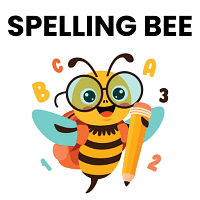Class 4 Exam > Class 4 Questions > Which one of the following is not a part of I...
Start Learning for Free
Which one of the following is not a part of Indian Railways?
- a)Taxi
- b)Sweeper
- c)Ticket checker
- d)Coolie
Correct answer is option 'A'. Can you explain this answer?
| FREE This question is part of | Download PDF Attempt this Test |
Most Upvoted Answer
Which one of the following is not a part of Indian Railways?a)Taxib)Sw...
Introduction:
In villages, most of the roads are unmetalled. This means that they are not paved or surfaced with a hard material such as concrete or asphalt. Instead, they are made of natural materials like soil, gravel, or clay. Unmetalled roads are also known as kutcha roads.
Reasons for unmetalled roads in villages:
There are several reasons why most roads in villages are unmetalled. Some of these reasons include:
1. Limited resources: Villages often have limited resources and funding for infrastructure development. Constructing metalled roads requires a significant investment and ongoing maintenance, which might not be feasible for many villages.
2. Low traffic volume: Villages generally have lower traffic volume compared to urban areas. As a result, the need for metalled roads with high load-bearing capacity is reduced.
3. Agricultural activities: Villages are primarily agricultural areas, and unmetalled roads are suitable for transporting agricultural produce, equipment, and livestock. These roads are often used by tractors, bullock carts, and other farm vehicles that can easily traverse on unmetalled surfaces.
4. Environmental considerations: Unmetalled roads are more environmentally friendly as they allow rainwater to percolate into the ground, preventing waterlogging and replenishing groundwater resources. Paved roads, on the other hand, can lead to water runoff and other environmental issues.
Advantages of unmetalled roads:
Although unmetalled roads may not offer the same level of smoothness and durability as metalled roads, they do have some advantages:
1. Cost-effective: Constructing unmetalled roads is generally more cost-effective compared to metalled roads. It requires fewer materials and less labor, which makes them a more viable option for villages with limited resources.
2. Flexibility: Unmetalled roads can be easily repaired and maintained by adding more gravel or leveling the surface. This flexibility allows villages to adapt to changing needs and conditions without incurring significant expenses.
3. Suitable for local conditions: Unmetalled roads are better suited to the natural terrain and weather conditions of villages. They can withstand seasonal variations, such as heavy rains, without significant damage.
Conclusion:
In conclusion, most of the roads in villages are unmetalled or kutcha roads due to factors such as limited resources, low traffic volume, suitability for agricultural activities, and environmental considerations. While unmetalled roads may have some limitations, they offer cost-effectiveness, flexibility, and suitability for local conditions.
In villages, most of the roads are unmetalled. This means that they are not paved or surfaced with a hard material such as concrete or asphalt. Instead, they are made of natural materials like soil, gravel, or clay. Unmetalled roads are also known as kutcha roads.
Reasons for unmetalled roads in villages:
There are several reasons why most roads in villages are unmetalled. Some of these reasons include:
1. Limited resources: Villages often have limited resources and funding for infrastructure development. Constructing metalled roads requires a significant investment and ongoing maintenance, which might not be feasible for many villages.
2. Low traffic volume: Villages generally have lower traffic volume compared to urban areas. As a result, the need for metalled roads with high load-bearing capacity is reduced.
3. Agricultural activities: Villages are primarily agricultural areas, and unmetalled roads are suitable for transporting agricultural produce, equipment, and livestock. These roads are often used by tractors, bullock carts, and other farm vehicles that can easily traverse on unmetalled surfaces.
4. Environmental considerations: Unmetalled roads are more environmentally friendly as they allow rainwater to percolate into the ground, preventing waterlogging and replenishing groundwater resources. Paved roads, on the other hand, can lead to water runoff and other environmental issues.
Advantages of unmetalled roads:
Although unmetalled roads may not offer the same level of smoothness and durability as metalled roads, they do have some advantages:
1. Cost-effective: Constructing unmetalled roads is generally more cost-effective compared to metalled roads. It requires fewer materials and less labor, which makes them a more viable option for villages with limited resources.
2. Flexibility: Unmetalled roads can be easily repaired and maintained by adding more gravel or leveling the surface. This flexibility allows villages to adapt to changing needs and conditions without incurring significant expenses.
3. Suitable for local conditions: Unmetalled roads are better suited to the natural terrain and weather conditions of villages. They can withstand seasonal variations, such as heavy rains, without significant damage.
Conclusion:
In conclusion, most of the roads in villages are unmetalled or kutcha roads due to factors such as limited resources, low traffic volume, suitability for agricultural activities, and environmental considerations. While unmetalled roads may have some limitations, they offer cost-effectiveness, flexibility, and suitability for local conditions.
Free Test
FREE
| Start Free Test |
Community Answer
Which one of the following is not a part of Indian Railways?a)Taxib)Sw...
In villages the roads are unmetalled that means they are made up of gravel and sand.
Attention Class 4 Students!
To make sure you are not studying endlessly, EduRev has designed Class 4 study material, with Structured Courses, Videos, & Test Series. Plus get personalized analysis, doubt solving and improvement plans to achieve a great score in Class 4.

|
Explore Courses for Class 4 exam
|

|
Which one of the following is not a part of Indian Railways?a)Taxib)Sweeperc)Ticket checkerd)CoolieCorrect answer is option 'A'. Can you explain this answer?
Question Description
Which one of the following is not a part of Indian Railways?a)Taxib)Sweeperc)Ticket checkerd)CoolieCorrect answer is option 'A'. Can you explain this answer? for Class 4 2024 is part of Class 4 preparation. The Question and answers have been prepared according to the Class 4 exam syllabus. Information about Which one of the following is not a part of Indian Railways?a)Taxib)Sweeperc)Ticket checkerd)CoolieCorrect answer is option 'A'. Can you explain this answer? covers all topics & solutions for Class 4 2024 Exam. Find important definitions, questions, meanings, examples, exercises and tests below for Which one of the following is not a part of Indian Railways?a)Taxib)Sweeperc)Ticket checkerd)CoolieCorrect answer is option 'A'. Can you explain this answer?.
Which one of the following is not a part of Indian Railways?a)Taxib)Sweeperc)Ticket checkerd)CoolieCorrect answer is option 'A'. Can you explain this answer? for Class 4 2024 is part of Class 4 preparation. The Question and answers have been prepared according to the Class 4 exam syllabus. Information about Which one of the following is not a part of Indian Railways?a)Taxib)Sweeperc)Ticket checkerd)CoolieCorrect answer is option 'A'. Can you explain this answer? covers all topics & solutions for Class 4 2024 Exam. Find important definitions, questions, meanings, examples, exercises and tests below for Which one of the following is not a part of Indian Railways?a)Taxib)Sweeperc)Ticket checkerd)CoolieCorrect answer is option 'A'. Can you explain this answer?.
Solutions for Which one of the following is not a part of Indian Railways?a)Taxib)Sweeperc)Ticket checkerd)CoolieCorrect answer is option 'A'. Can you explain this answer? in English & in Hindi are available as part of our courses for Class 4.
Download more important topics, notes, lectures and mock test series for Class 4 Exam by signing up for free.
Here you can find the meaning of Which one of the following is not a part of Indian Railways?a)Taxib)Sweeperc)Ticket checkerd)CoolieCorrect answer is option 'A'. Can you explain this answer? defined & explained in the simplest way possible. Besides giving the explanation of
Which one of the following is not a part of Indian Railways?a)Taxib)Sweeperc)Ticket checkerd)CoolieCorrect answer is option 'A'. Can you explain this answer?, a detailed solution for Which one of the following is not a part of Indian Railways?a)Taxib)Sweeperc)Ticket checkerd)CoolieCorrect answer is option 'A'. Can you explain this answer? has been provided alongside types of Which one of the following is not a part of Indian Railways?a)Taxib)Sweeperc)Ticket checkerd)CoolieCorrect answer is option 'A'. Can you explain this answer? theory, EduRev gives you an
ample number of questions to practice Which one of the following is not a part of Indian Railways?a)Taxib)Sweeperc)Ticket checkerd)CoolieCorrect answer is option 'A'. Can you explain this answer? tests, examples and also practice Class 4 tests.

|
Explore Courses for Class 4 exam
|

|
Suggested Free Tests
Signup for Free!
Signup to see your scores go up within 7 days! Learn & Practice with 1000+ FREE Notes, Videos & Tests.






















